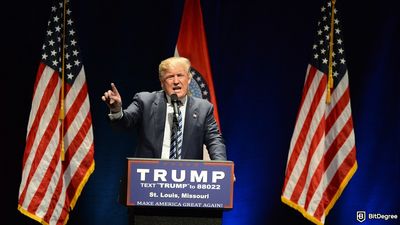In a post made on Monday, Vitalik Buterin - the co-founder of the second-largest cryptocurrency Ethereum - laid out a roadmap for what ETH 2.0 could look like, at its later stages of development.
In his post, Buterin pondered about how bigger blockchains (in terms of popularity, block size, transaction count per second, etc.) could still remain resistant to outside forces aiming to impose censorship on the chain. Here, however, the blockchain would become much more centralized - this is something that Vitalik Buterin did not comment on.
As for the trustlessness of said blockchains and their block production process, the Ethereum co-founder suggested three distinct solutions:
- A second staking tier;
- The ability for anyone to check the block validity of the chain, with the help of fraud-proof tools, or ZK-SNARKS;
- Data availability sampling in order for users to be able to check block availability. A secondary transaction channel may be added, as well, which would tackle the censorship concerns.

Did you know?
Want to get smarter & wealthier with crypto?
Subscribe - We publish new crypto explainer videos every week!
How to Get Free Crypto? (Explained with Animations)


Buterin states that, if these updates are enforced, this should result in a peculiar situation with the impacted blockchain. Specifically, while the production of blocks is going to remain centralized, the actual validation of produced blocks will be decentralized, and, to an extent, censorship-resistant.
Vitalik Buterin also shut down the popular idea that layer-two solutions (specifically, settling blockchain-based transactions off-chain), also known as “rollups”, could be a viable solution for the aforementioned censorship issue. Buterin stated:
“No single rollup succeeds at holding anywhere close to the majority of Ethereum activity. Instead, they all top out at a few hundred transactions per second. We get a multi-rollup future for Ethereum - the Cosmos multi–chain vision, but on top of a base layer providing data availability and shared security. Users frequently rely on cross-rollup bridging to jump between different rollups without paying the high fees on the main chain. What would that world look like?”
Buterin notes that, no matter which road is taken, the end-vision would likely include centralized block production.
ETH 2.0 is undoubtedly one of the most awaited updates that Ethereum will have experienced ever since its inception back in 2015. The update aims to tackle gas fees, scalability concerns, security features, and - probably most controversial of them all - a shift from the Proof of Work to Proof of Stake consensus algorithm. In other words, Ether will not be available to be mined (as it was up till now), but instead, mining will be replaced with staking functionality.






















